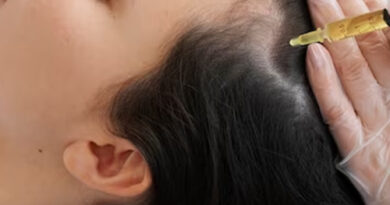The Science Behind Better Breathing Techniques
Breathing is a vital process we often take for granted. However, for individuals facing conditions like COPD (Chronic Obstructive Pulmonary Disease) or shortness of breath, breathing can be a challenging and conscious effort. Fortunately, science-backed breathing techniques can significantly improve lung function, reduce discomfort, and enhance overall quality of life. This article explores the best breathing techniques, their scientific basis, and how they contribute to a difficulty breathing care plan.
Understanding Breathing Mechanics
To appreciate the power of breathing techniques, it’s essential to understand how breathing works. Your lungs, diaphragm, and intercostal muscles work in harmony to ensure oxygen enters your bloodstream and carbon dioxide exits. However, when respiratory health is compromised due to conditions like COPD, this process becomes less efficient.
This inefficiency often leads to shortness of breath, making everyday activities more strenuous. Incorporating targeted breathing practices can restore balance, reduce fatigue, and even promote healing.
Breathing Techniques for COPD and Shortness of Breath
Scientific research supports several effective breathing techniques for COPD and individuals experiencing shortness of breath. These methods are designed to maximize oxygen intake, regulate breathing patterns, and strengthen respiratory muscles.
1. Pursed-Lip Breathing
Pursed-lip breathing is a simple yet powerful technique:
- Inhale deeply through your nose for two counts.
- Exhale slowly through pursed lips (as if you’re whistling) for four counts.
This method helps to slow your breathing, maintain open airways, and improve oxygen exchange. It is one of the best breathing techniques for managing shortness of breath caused by COPD.
2. Diaphragmatic Breathing (Belly Breathing)
This technique engages the diaphragm, which is a primary muscle for breathing:
- Sit or lie down in a comfortable position.
- Place one hand on your chest and the other on your stomach.
- Breathe in deeply through your nose, ensuring your stomach rises more than your chest.
- Exhale through pursed lips while pressing gently on your stomach.
Diaphragmatic breathing enhances lung efficiency and reduces the effort required for each breath. It’s a cornerstone of many difficulty breathing care plans.
The Science Behind Breathing Techniques
Breathing exercises are not just relaxing—they’re grounded in science. They improve lung elasticity, strengthen respiratory muscles, and promote efficient gas exchange. Here’s how:
- Lung Expansion and Efficiency
Techniques like diaphragmatic breathing train the lungs to expand fully, increasing oxygen intake and reducing residual air that can make breathing difficult for COPD patients. - Reducing Hyperinflation
COPD often causes air to become trapped in the lungs, leading to hyperinflation. Breathing exercises like pursed-lip breathing help regulate airflow and reduce this phenomenon. - Improved Autonomic Control
Mindful breathing techniques influence the autonomic nervous system, promoting relaxation and reducing stress—common triggers for shortness of breath.
Building a Difficulty Breathing Care Plan
Incorporating structured breathing exercises into a difficulty breathing care plan can make a significant difference. Here are steps to create an effective plan:
- Assess Breathing Patterns
Work with a healthcare provider to identify breathing inefficiencies and select suitable techniques. - Set Goals
Define achievable objectives, such as reducing shortness of breath during exercise or improving overall stamina. - Practice Regularly
Dedicate time daily to practice techniques like pursed-lip or diaphragmatic breathing. - Track Progress
Use a journal to monitor improvements in breathing comfort, stamina, and quality of life.
The Role of the Pulmonary Wellness Foundation
The Pulmonary Wellness Foundation has been at the forefront of promoting lung health through education, research, and practical interventions. Their programs emphasize the importance of breathing exercises as part of a holistic approach to respiratory wellness.
By following the principles outlined by the foundation, individuals can access resources that guide them in implementing the ultimate pulmonary wellness strategies. This comprehensive approach not only addresses breathing challenges but also empowers patients to take control of their health.
Are you ready to improve your breathing and take control of your respiratory health? The Pulmonary Wellness Foundation offers expert guidance, proven techniques, and compassionate care to help you achieve your wellness goals. Visit Pulmonary Wellness Foundation today to learn more and start your journey to better breathing!
Best Breathing Techniques for Everyday Life
Beyond managing specific conditions, breathing exercises can enhance general well-being. Here are a few versatile techniques:
- Box Breathing: Inhale for four counts, hold your breath for four counts, exhale for four counts, and pause for another four counts. This technique is excellent for reducing anxiety and improving focus.
- 4-7-8 Breathing: Inhale for four counts, hold for seven counts, and exhale for eight counts. This method is particularly useful for relaxation and better sleep.
These techniques complement the specialized breathing practices for individuals with respiratory conditions, contributing to their ultimate pulmonary wellness.
Conclusion
Breathing is a natural process, but for those experiencing respiratory challenges, it requires intentional practice and care. By adopting scientifically backed breathing techniques for COPD, individuals can regain control over their breathing and improve their quality of life.
Whether you’re designing a difficulty breathing care plan or seeking ways to enhance your overall health, breathing exercises offer a powerful, drug-free solution. Incorporate these practices into your daily routine, and consider seeking guidance from organizations like the Pulmonary Wellness Foundation for expert advice.
Take the first step towards the ultimate pulmonary wellness today. Explore our Pulmonary Wellness Foundation online to explore our resources, connect with experts, and breathe better tomorrow!




